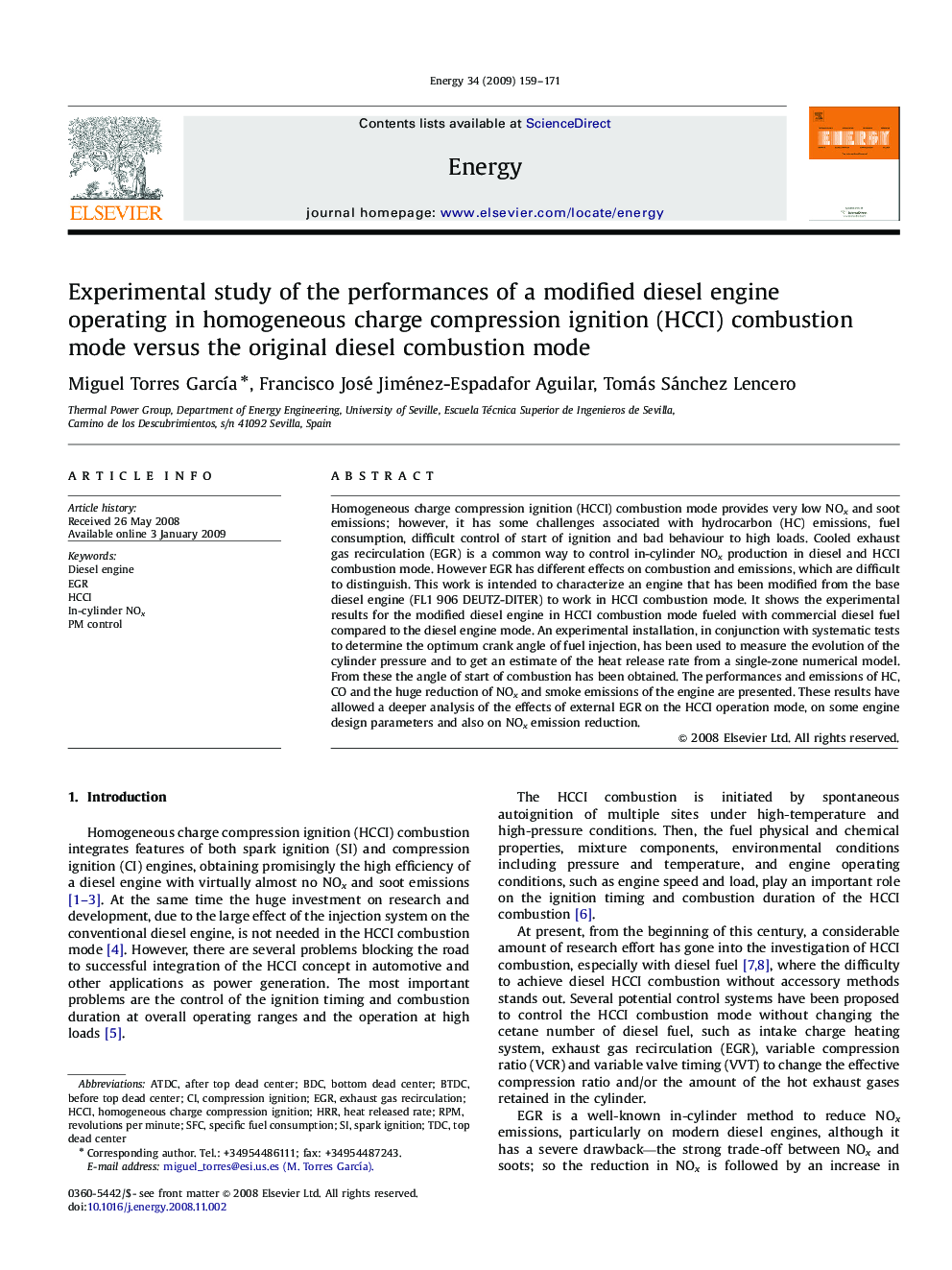| Article ID | Journal | Published Year | Pages | File Type |
|---|---|---|---|---|
| 1735313 | Energy | 2009 | 13 Pages |
Homogeneous charge compression ignition (HCCI) combustion mode provides very low NOx and soot emissions; however, it has some challenges associated with hydrocarbon (HC) emissions, fuel consumption, difficult control of start of ignition and bad behaviour to high loads. Cooled exhaust gas recirculation (EGR) is a common way to control in-cylinder NOx production in diesel and HCCI combustion mode. However EGR has different effects on combustion and emissions, which are difficult to distinguish. This work is intended to characterize an engine that has been modified from the base diesel engine (FL1 906 DEUTZ-DITER) to work in HCCI combustion mode. It shows the experimental results for the modified diesel engine in HCCI combustion mode fueled with commercial diesel fuel compared to the diesel engine mode. An experimental installation, in conjunction with systematic tests to determine the optimum crank angle of fuel injection, has been used to measure the evolution of the cylinder pressure and to get an estimate of the heat release rate from a single-zone numerical model. From these the angle of start of combustion has been obtained. The performances and emissions of HC, CO and the huge reduction of NOx and smoke emissions of the engine are presented. These results have allowed a deeper analysis of the effects of external EGR on the HCCI operation mode, on some engine design parameters and also on NOx emission reduction.
